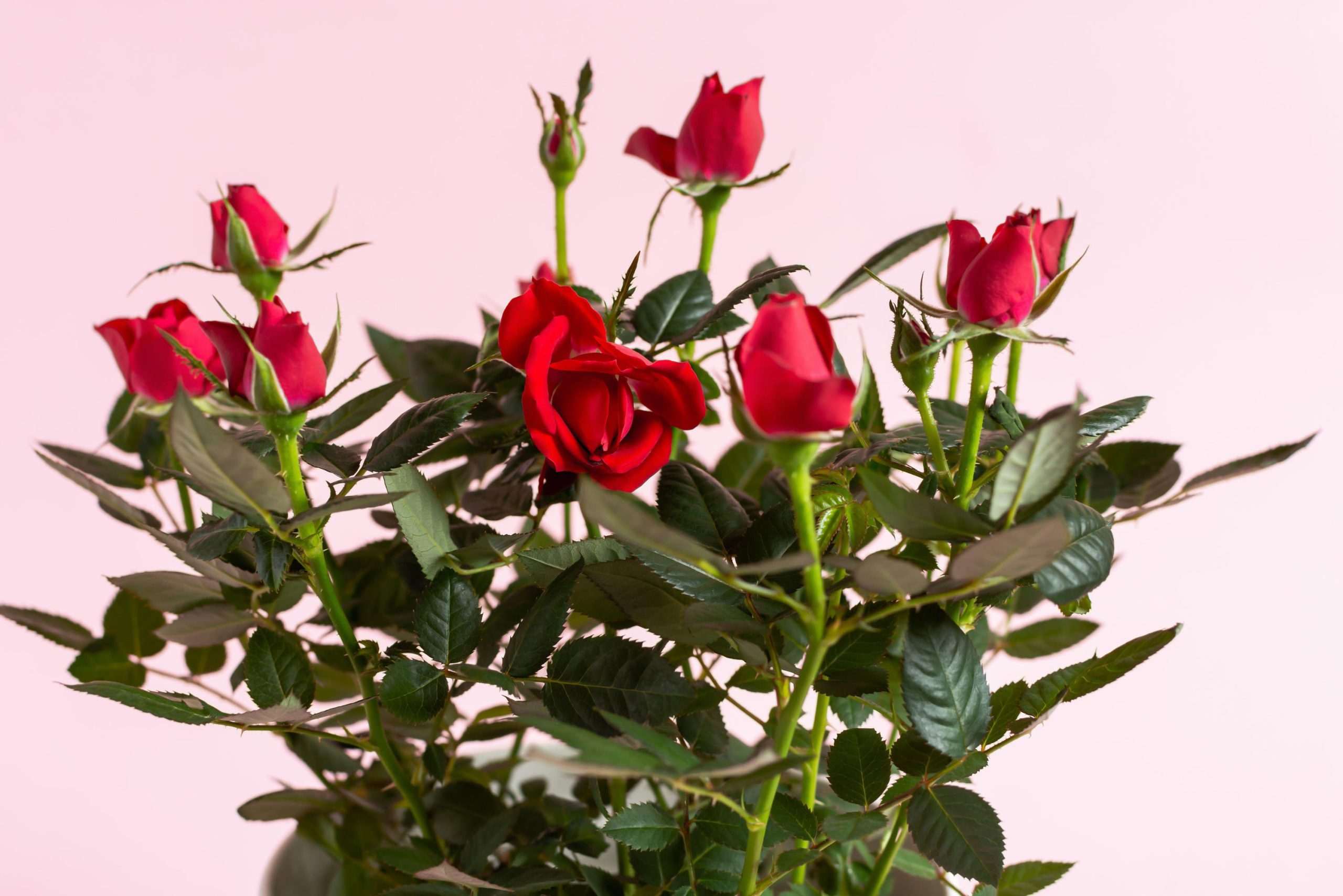How to keep your potted Valentine’s rose blooming
Experts offer tips on how to keep your indoor rose flowering well beyond Valentine’s Day
A dozen red roses may be a gesture of love in the short term, but the gift of a potted rose for Valentine’s Day will last a lot longer with the right care.
“Potted roses are very easy to grow as a houseplant,” says Chelsea award-winning urban gardener Jade Murray, author of The Indoor Garden (Pimpernel Press).
At the supermarket I found this mini rose bush, isn’t it terribly cute?! The picture doesn’t really convey how tiny it is, the container is at its widest diameter only approx. 7.5 cm / 3 inches 😊 #rosebush #redroses #miniatureroses #minirosebush #miniaturerose pic.twitter.com/du18Ozo0QV
— La Visch (@VischLa) May 22, 2021
“They can continue to bloom indoors for about five to eight weeks, so you can enjoy potted roses indoors for far longer than you would with a freshly cut bouquet of roses popped in water.”
Claire Bishop, senior houseplant buyer for Dobbies Garden Centres (dobbies.com), adds: “Indoor potted roses tend to bloom from spring right through to late summer if cared for properly. Environment is a huge factor as this plant needs the right conditions to thrive.”
Where should you place them?

Put them well away from any existing houseplants you may already have, Murray advises. “Contamination of houseplant pests happens so easily when you bring a new plant home. Check the plant for any pests and isolate it from your other houseplants for a few days until you are sure your new plant is pest free.”
Bishop adds: “Indoor roses like indirect sunlight so place them in a bright spot, but make sure you avoid south facing windows as too much sun can scorch the leaves.”
Rotate them once or twice a week to promote even growth and keep them away from cold draughts or central heating, Murray continues.
“Indoor roses prefer a more humid environment, so if the environment is too dry they may start to drop their leaves and blooms may shrivel. Keep the humidity levels up by placing your rose on a tray of pebbles with water in,” she suggests.
What about watering?

“Roses should be watered frequently to stop the soil from drying out, especially in the warmer months,” says Bishop. “Test your plant every day or so in summer by feeling the top layer of soil and water if it feels dry to the touch. To encourage growth in summer, feed your roses every couple of weeks using an organic fertiliser.”
Murray suggests fertilising monthly using a water-soluble fertiliser designed for roses and to dilute the fertiliser to half the strength recommended on the product instructions. “That way you can be sure you are not over-fertilising the plant which can cause issues like excess salts in the soil which can damage the roots or even cause leaf burn.”
Don’t forget to deadhead
To encourage new blooms and growth, use pruning shears or sharp scissors to remove blooms as soon as they fade, which will keep your potted roses looking their best, Murray says.
“Don’t feel afraid to prune any dead branches and those that intersect others. Trimming those back will encourage new growth and create a bushier plant. I would also recommend repotting your indoor roses once a year as you would do normally with houseplants to renew soil nutrients.”
Do you need to put them outside in summer?
Happy Valentine’s Day. Rather than a cut rose a potted miniature red rose will do which can eventually be planted in the garden. #redrose #miniaturerose #happyvalentinesday #momentsinthegardenphotography pic.twitter.com/CO5Z7LnOMJ
— Vyvienne (@MomentsintheG) February 14, 2021
“Indoor roses can be potted out in the summer but will need frost protection in the colder months if they’re going to survive,” Bishop advises.
“If your rose is outgrowing its container, you can repot it to allow room for growth. You’ll be able to tell your plant needs a larger container when you start to see its roots appearing through the drainage holes in the bottom of the pot.”
Wait until the danger of frost has passed before putting your rose outside, Murray adds. “Position them where they can receive plenty of sunlight. Plant your potted roses in rich soil and mulch them well when next winter comes.

“Bear in mind that you won’t be able to bring them indoors again. They will need a dormant season. With the proper care, they will grow happily in your garden for many years to come and continue to reward you with beautiful blooms.”
Do you need to prune indoor roses?
Bishop advises: “In autumn, once your roses have finished flowering, you can trim back to promote new growth and keep the flowers healthy. This will increase the chances of your roses blooming again the following year.”



















